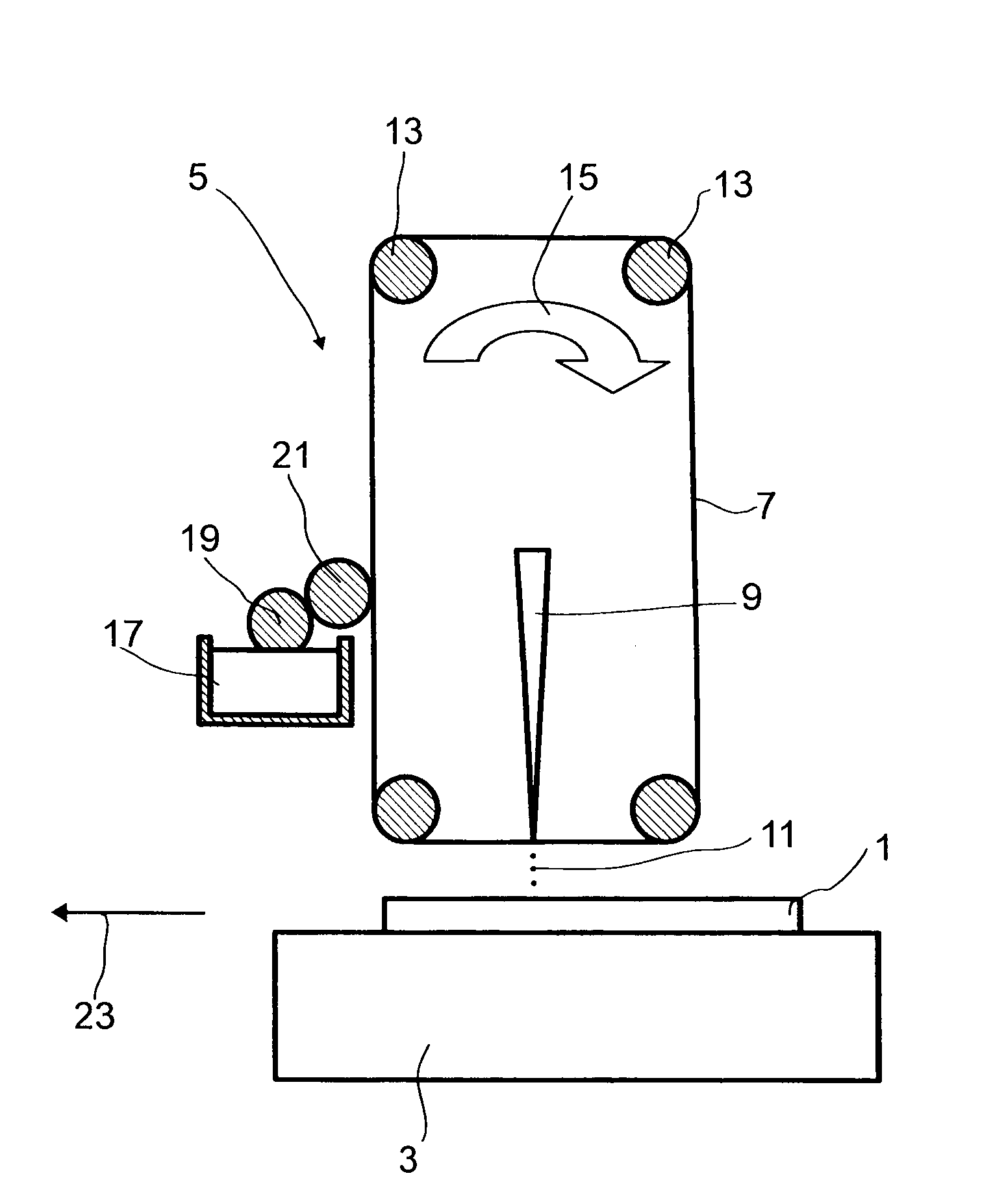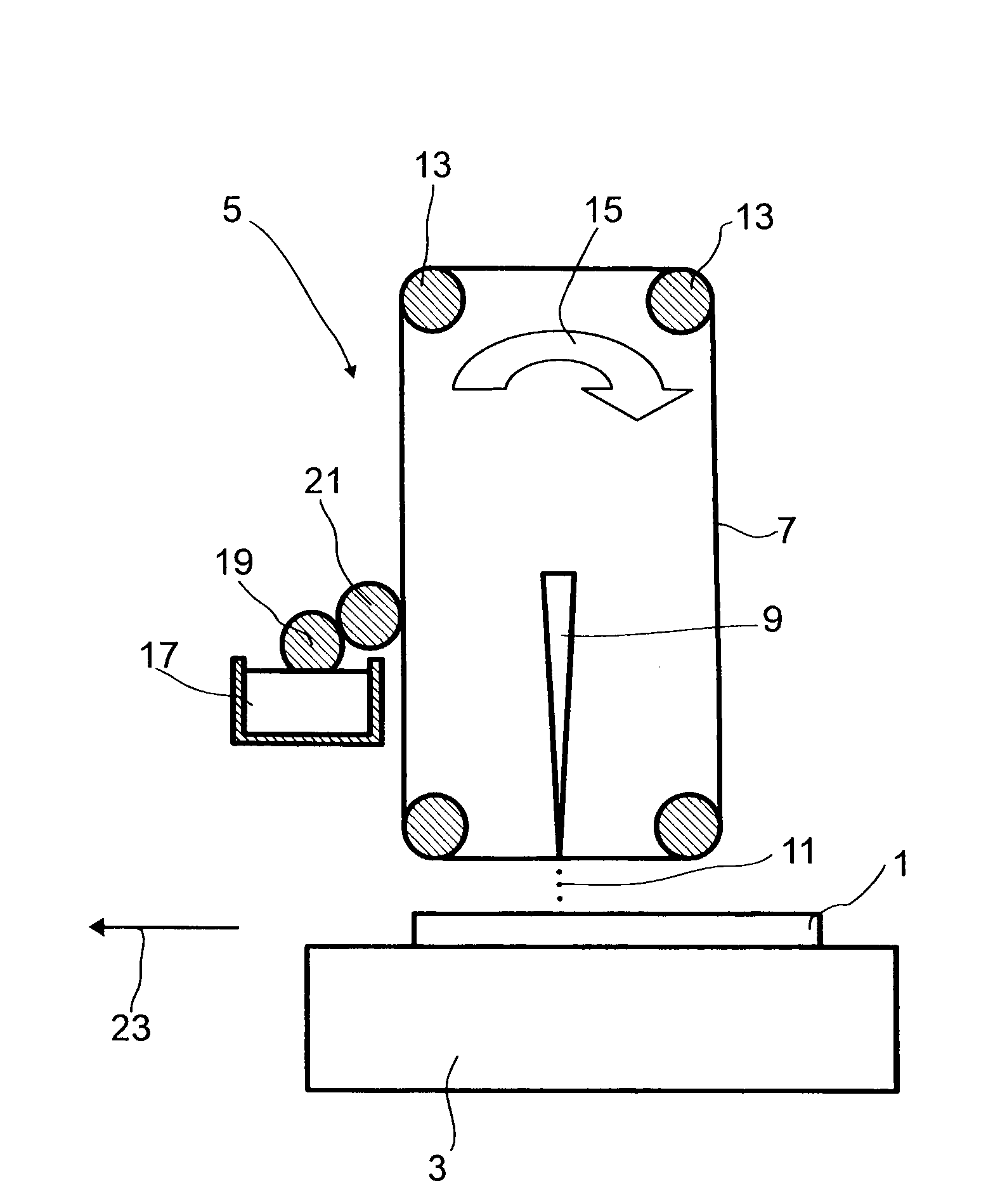Process for producing electrodes for solar cells
a technology of solar cells and electrodes, applied in the direction of basic electric elements, electrical apparatus, semiconductor devices, etc., can solve the problems of limited printing resolution, substrate fracture, and inability to proceed, and achieve the effect of simple manner
- Summary
- Abstract
- Description
- Claims
- Application Information
AI Technical Summary
Benefits of technology
Problems solved by technology
Method used
Image
Examples
Embodiment Construction
[0084]To produce electrodes for solar cells, a substrate 1 is supplied to a coating device 5 with a transport device 3 which is shown here only schematically. Suitable transport devices 3 are any desired transport devices known to those skilled in the art. For example, the transport device 3 may comprise a belt on which the substrate 1 is positioned and which is conducted around rollers in order to move the substrate 1. Alternatively, for example, it is possible to use feeders with which the substrate 1 is positioned in the coating device 5. It is also possible to use any other suitable transport device known to those skilled in the art.
[0085]The coating device 5 comprises a carrier 7 which is coated with a dispersion. In order to coat the substrate 1, the carrier 7 coated with the dispersion is irradiated with a laser 9. This detaches the dispersion from the carrier 7 and transfers it to the substrate 1. This is done, for example, by evaporating a small amount of the solvent which ...
PUM
 Login to View More
Login to View More Abstract
Description
Claims
Application Information
 Login to View More
Login to View More - R&D
- Intellectual Property
- Life Sciences
- Materials
- Tech Scout
- Unparalleled Data Quality
- Higher Quality Content
- 60% Fewer Hallucinations
Browse by: Latest US Patents, China's latest patents, Technical Efficacy Thesaurus, Application Domain, Technology Topic, Popular Technical Reports.
© 2025 PatSnap. All rights reserved.Legal|Privacy policy|Modern Slavery Act Transparency Statement|Sitemap|About US| Contact US: help@patsnap.com


